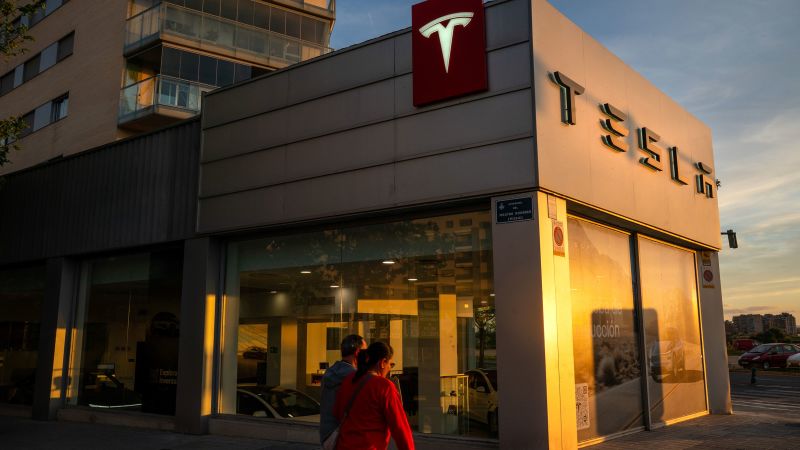Tesla, the leading electric vehicle manufacturer, has experienced a notable decline in sales across Europe, even as interest in electric vehicles (EVs) rises throughout the continent. Various monthly sales figures reveal that Tesla’s presence has weakened in key markets, including the United Kingdom, the Netherlands, Denmark, Portugal, Sweden, and France. April 2025 witnessed significant drops in sales, casting a shadow over the company’s American efforts, where it remains more successful.
In the United Kingdom, reports by the Society of Motor Manufacturers and Traders (SMMT) indicated a staggering 62% drop in Tesla’s sales in April. Remarkably, this decline occurred during a period when overall electric vehicle sales within the UK rose by 8%. This disparity highlights a troubling trend for Tesla, especially given that the UK was among the few European markets where the company had seen stronger sales during the first quarter of the year.
Additional data underscores an even graver outlook for Tesla’s operations in Europe. For instance, there were sales decreases of 67% in Denmark, a staggering 74% in the Netherlands, and a noteworthy 33% in Portugal. Sweden reported an alarming 81% drop, while France noted a 59% reduction in Tesla sales. These statistics, compiled from local trade groups, reveal a concerning shift among European consumers, particularly as the broader market for EVs continues to expand. It is worth noting that Tesla does not disclose its monthly sales figures, nor does it differentiate sales based on regional markets.
Beyond sales performance, public sentiment surrounding CEO Elon Musk has also come into play. Musk’s political engagements, particularly his endorsement of far-right candidates in Germany and the UK, have sparked backlash and protests within certain segments of the European populace. Additionally, concerns regarding potential tariffs on European imports, stemming from Musk’s connections to the Trump administration, may have further alienated potential buyers. The intertwining of business and politics has complicated Tesla’s standing in the European automotive market.
The competitive landscape for electric vehicles is also evolving. As Tesla navigates declining popularity, it faces increasing competition from other manufacturers, particularly from Chinese firm BYD, which is gearing up to potentially surpass Tesla as the leading EV manufacturer globally in the near future. This heightened competition could be contributing to Tesla’s adverse sales trends, as consumers have a more diverse range of choices than ever before.
Analysts speculating on Tesla’s future sales volumes have expressed concerns about the company’s performance trajectory. Although no specific guidance has been issued for 2025, industry expectations suggest a continued downturn for Tesla, particularly in light of the backlash against Musk and the company’s struggling sales figures within Europe. Gordon Johnson, an analyst at GLJ Research, highlighted the company’s prospects, characterizing the second quarter of 2025 as likely to be another subpar performance, following the disappointing results of the first quarter.
Data from the European Automobile Manufacturers’ Association indicates that Tesla’s sales fell 36% in the first three months of the year, despite the overall EV sales in the region experiencing a growth of 24%. This dichotomy reflects the challenges Tesla faces as it seeks to maintain its market position amid rising competition and changing consumer preferences.
Moreover, this downturn in sales comes on the heels of Tesla reporting its first annual sales decline in 2024 and the most significant drop in quarterly global sales in its history during the first quarter of 2025. Such developments have raised alarm within investor circles, as the company’s net income plummeted by 71% during that quarter. Tesla has increasingly relied on selling regulatory credits to traditional automakers to maintain profitability, which raises questions about the sustainability of its business model moving forward.
In conclusion, Tesla’s struggle in the European market presents a multifaceted challenge fueled by political backlash, increasing competition, and shifting consumer preferences. As the company attempts to navigate these turbulent waters, the path ahead remains uncertain, with analysts and stakeholders keenly observing its next moves in a rapidly evolving automotive landscape.



